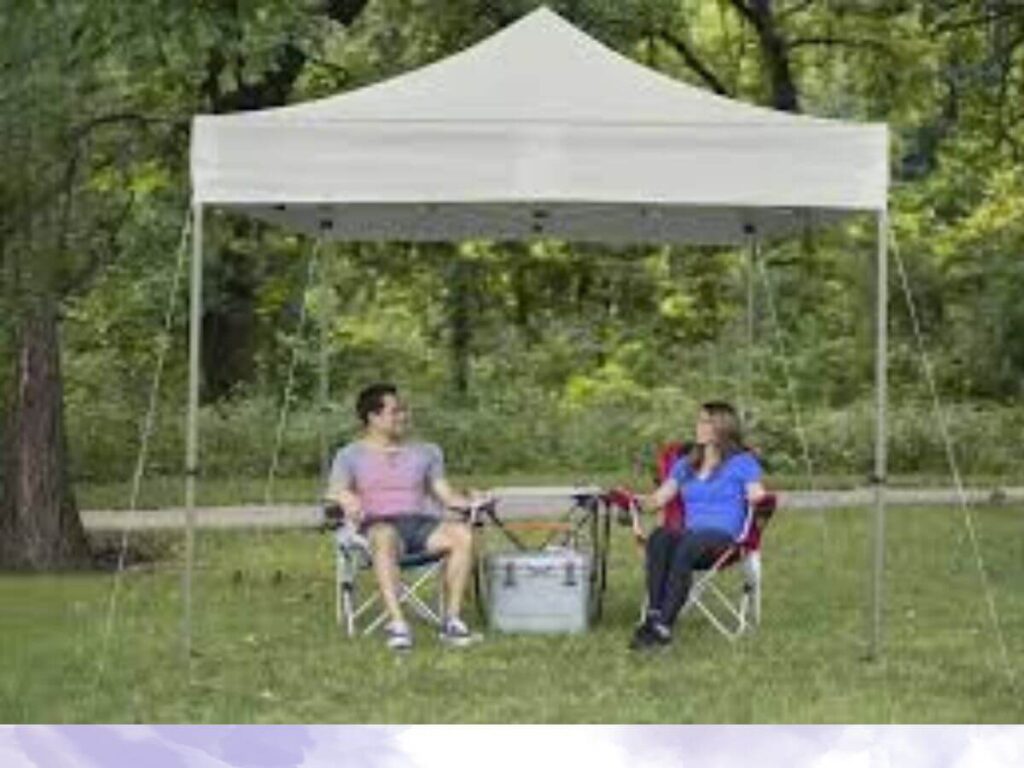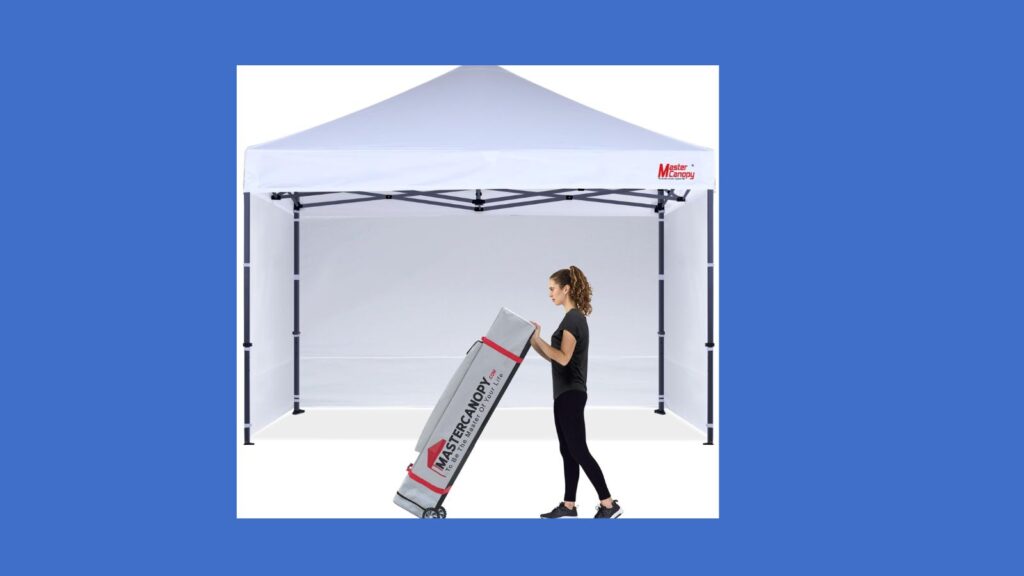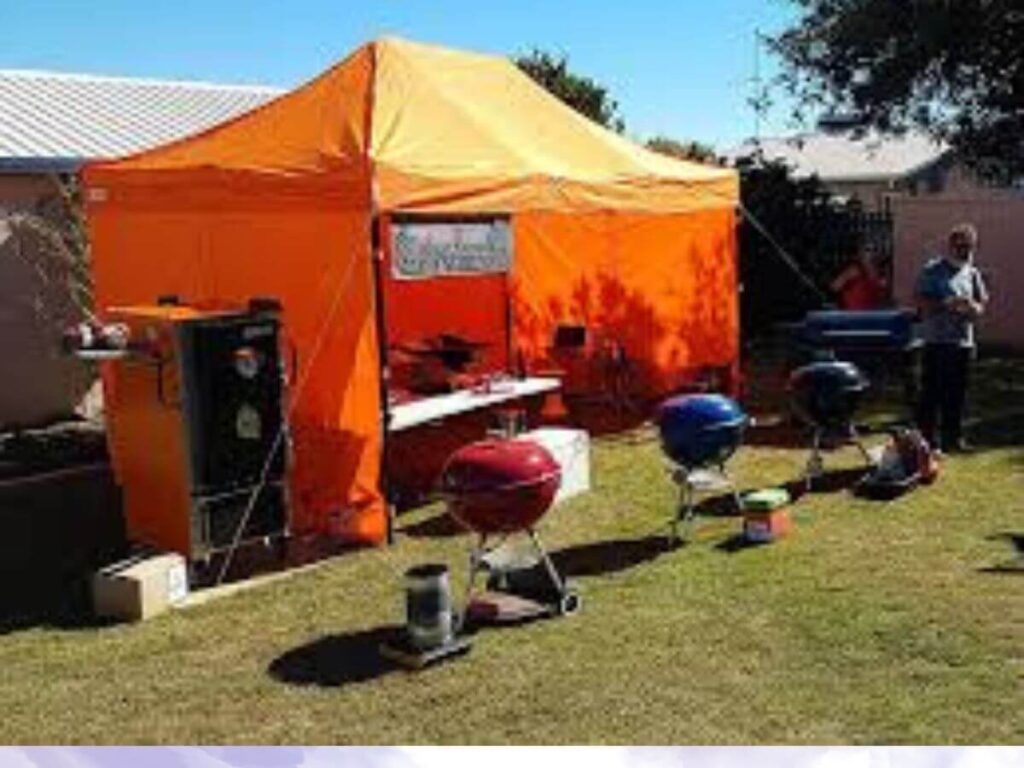Welcome to our expert guide on setting up and maintaining your canopy tent. A canopy tent is a versatile and practical outdoor shelter that can be used for a variety of events and activities. Whether you are hosting a backyard barbecue, setting up a booth at a farmer’s market, or planning a beach day with friends, knowing how to properly set up and care for your canopy tent is essential. In this blog post, we will provide you with the tips and tricks you need to ensure your canopy tent stands strong and lasts for many outdoor adventures to come. So let’s dive in and become canopy tent experts together.
Introduction to the importance of canopy tents for outdoor events and activities

Canopy tents are a crucial element for outdoor events and activities, as they provide shelter, shade, and protection from the elements. Whether it’s a large music festival, a corporate event, or a family picnic, canopy tents offer a versatile and practical solution for creating a comfortable and enjoyable outdoor space.
One of the key benefits of canopy tents is their ability to provide shade on hot sunny days. This is particularly important for events held during the summer months, when the sun’s rays can be intense and potentially harmful. By providing a shaded area, canopy tents help to keep guests cool and comfortable, ensuring a more enjoyable experience for everyone in attendance.
In addition to providing shade, canopy tents also offer protection from inclement weather such as rain and wind. This is essential for events that take place outdoors, as unpredictable weather can easily disrupt or even cancel an event. With a sturdy and weather-resistant canopy tent in place, organizers can rest assured that their event will go on as planned, no matter what Mother Nature throws their way.
Canopy tents are also highly versatile, as they can be easily customized to suit the specific needs of an event. From size and shape to color and branding, canopy tents can be tailored to match the aesthetic and theme of any event. This makes them a popular choice for a wide range of occasions, from weddings and trade shows to farmers’ markets and outdoor concerts.
Overall, canopy tents play a crucial role in the success of outdoor events and activities.
Key factors to consider when selecting a canopy tent for your needs

When it comes to selecting a canopy tent for your needs, there are several key factors to consider to ensure that you make the right choice. One of the most important factors to consider is the size of the canopy tent. You need to determine how many people will be using the canopy tent and what activities you will be using it for. This will help you choose a canopy tent that is the right size for your needs and will provide enough space for everyone to comfortably gather under it.
Another important factor to consider when selecting a canopy tent is the material it is made from. Canopy tents are typically made from either polyester or vinyl. Polyester is lightweight and easy to transport, making it a great option for camping trips or outdoor events. Vinyl is more durable and weather-resistant, making it a better choice for long-term use. Consider the weather conditions in which you will be using the canopy tent to determine which material is best for your needs.
The design of the canopy tent is also an important factor to consider. Some canopy tents are designed with straight legs, while others have slanted legs. The design of the canopy tent can affect how stable it is in windy conditions and how much shade it provides. Consider where you will be using the canopy tent and choose a design that will best suit your needs.
Durability is another key factor to consider when selecting a canopy tent. You want to choose a canopy tent that is made from high-quality materials and is built to last.
Step-by-step guide on how to properly set up a canopy tent for maximum stability

When setting up a canopy tent, it is important to follow a step-by-step process to ensure maximum stability. This will help prevent the tent from moving or collapsing during windy conditions, keeping you and your guests safe. Here is a guide on how to properly set up a canopy tent for maximum stability.
First, start by selecting a level and clear area to set up the canopy tent. Remove any debris or rocks that could potentially cause instability. It is also important to check the weather forecast before setting up the tent to avoid any unexpected weather conditions that could impact the stability of the tent.
Next, assemble the frame of the canopy tent according to the manufacturer’s instructions. Make sure all the pieces are securely connected and in their proper place. It is crucial to double-check that the frame is fully extended and locked into position before moving on to the next step.
Once the frame is assembled, carefully place the canopy top over the frame. Make sure the top is securely attached to the frame at all points to prevent it from coming loose in the wind. If your canopy tent comes with stakes or weights, be sure to use them to secure the tent to the ground for added stability.
After securing the canopy top, adjust the height of the tent to your desired level. Most canopy tents have adjustable legs that allow you to customize the height to fit your needs. It is important to ensure all legs are set at the same height to prevent uneven weight distribution, which could lead to instability.
Tips for maintaining and cleaning your canopy tent to prolong its lifespan

Canopy tents are a versatile and practical solution for outdoor events, providing shade and protection from the elements. To ensure that your canopy tent remains in top condition and lasts for many seasons, regular maintenance and cleaning are essential. Here are some tips to help you prolong the lifespan of your canopy tent.
First and foremost, it is important to regularly inspect your canopy tent for any signs of wear and tear. Check for any holes, tears, or loose seams that may need to be repaired. By catching these issues early on, you can prevent them from becoming larger problems that could compromise the structural integrity of your canopy tent.
When it comes to cleaning your canopy tent, it is best to use a mild soap and water solution. Avoid harsh chemicals or abrasive cleaners, as these can damage the fabric of your tent. Gently scrub the surface of the canopy with a soft brush or cloth, paying close attention to any areas that may have dirt or stains. Rinse thoroughly with clean water and allow the canopy to air dry completely before storing it away.
Storing your canopy tent properly when not in use is also important for prolonging its lifespan. Make sure to fold the tent neatly and securely, avoiding any sharp bends or creases that could weaken the fabric. Store your canopy tent in a cool, dry place away from direct sunlight and moisture to prevent mold and mildew growth.
How to properly store your canopy tent when not in use to prevent damage

When it comes to properly storing your canopy tent when not in use, there are a few key steps to take in order to prevent damage and ensure its longevity. Taking the time to store your canopy tent correctly will not only protect your investment, but also make it easier to set up and use in the future.
First and foremost, it is important to clean and dry your canopy tent before storing it. Any dirt, debris, or moisture left on the tent can lead to mold, mildew, and other damage over time. To clean your tent, simply wipe it down with a gentle soap and water solution and allow it to air dry completely before storing.
Once your canopy tent is clean and dry, the next step is to properly fold and pack it away. Start by collapsing the tent according to the manufacturer’s instructions, being careful not to force any parts or bend any poles unnaturally. Then, fold the tent neatly and pack it into its carrying bag or storage container.
When storing your canopy tent, it is important to keep it in a cool, dry place away from direct sunlight and moisture. Extreme heat and sunlight can cause the fabric and materials to deteriorate over time, while dampness can lead to mold growth. Consider storing your canopy tent in a garage, shed, or basement, or investing in a specialized storage bag or container.
In addition to proper cleaning, folding, and storage, it is a good idea to periodically inspect your canopy tent for any signs of wear and tear.
How to troubleshoot common issues with canopy tents, such as tears or leaks
When it comes to canopy tents, they are a popular choice for outdoor events, parties, and gatherings due to their versatility and ease of set up. However, like any other outdoor equipment, canopy tents can experience common issues such as tears or leaks. In this blog section, we will discuss how to troubleshoot and address these common problems to ensure your canopy tent remains in top-notch condition.
Tears in canopy tents can occur due to a variety of reasons, such as rough handling during set up or strong winds. To troubleshoot tears, start by assessing the extent of the damage. If the tear is small, you can easily repair it using a patch kit specifically designed for canopy tents. Simply clean the area around the tear, apply the patch, and let it dry according to the manufacturer’s instructions. For larger tears, you may need to consider replacing the damaged section or seeking professional repair services.
Leaks are another common issue faced by canopy tent owners, especially during rainy weather. To troubleshoot leaks, start by inspecting the seams of the tent for any signs of wear or damage. If you notice any gaps or holes, you can apply a seam sealer to waterproof the area and prevent leaks. Additionally, make sure the canopy is properly pitched to allow water to run off and prevent pooling, which can lead to leaks. If leaks persist, consider investing in a high-quality canopy tent with better waterproofing features.
Regular maintenance is key to preventing and addressing common issues with canopy tents. Make sure
conclusion
In conclusion, properly setting up and maintaining your canopy tent is crucial in ensuring its longevity and functionality. By following the expert tips provided in this article, you can optimize the performance of your canopy tent and extend its lifespan. Remember to always secure the tent properly, clean and store it correctly, and perform regular inspections to identify and address any issues promptly. With these practices in place, you can enjoy many successful events under the protection of your canopy tent. Thank you for taking the time to read our guide and happy tenting!






